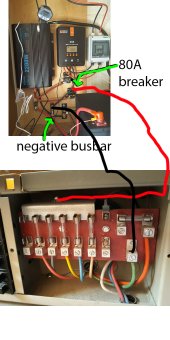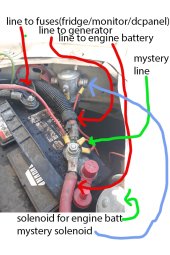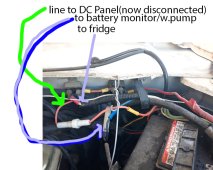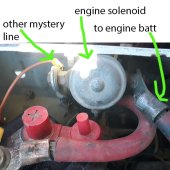Unfortunately we ran the heater a few too many times and the old house battery is at around 7v which is causing the Propane detector to refuse to open the propane lines. This is why I want to get the Propane detector on the new battery ASAP.
I think the reason the fridge, battery monitor/water pump, water heater and propane detector are all directly connected to the battery rather than run from the DC Panel is because the Panel is way in the back of the RV and the Battery is in the engine bay, so wiring everything to the DC Panel would have added a lot of length to all the wires.
At the house battery I have figured out that there are inline fused wires for the fridge, battery monitor/water pump and the one that used to connect to the DC panel. On the Positive terminal there is also a wire going to the generator, a small mystery wire and one going to a solenoid which then runs a line to the engine battery which has another small mystery wire on the house battery side of the solenoid.
I am guessing one of the small unfused mystery wires go to the propane detector? Then the other mystery line is probably for the waterheater. I also included pictures to help make sense of my explanation. I am planning on disconnecting the fused lines and running them to a DC fuseblock to connect to my battery I also will disconnect the generator positive line and connect it to the new LiFePo Battery. The generator is already grounded to the chassis which is why it just needs a positive line running to it (I think?).
View attachment 71419View attachment 71420View attachment 71421






